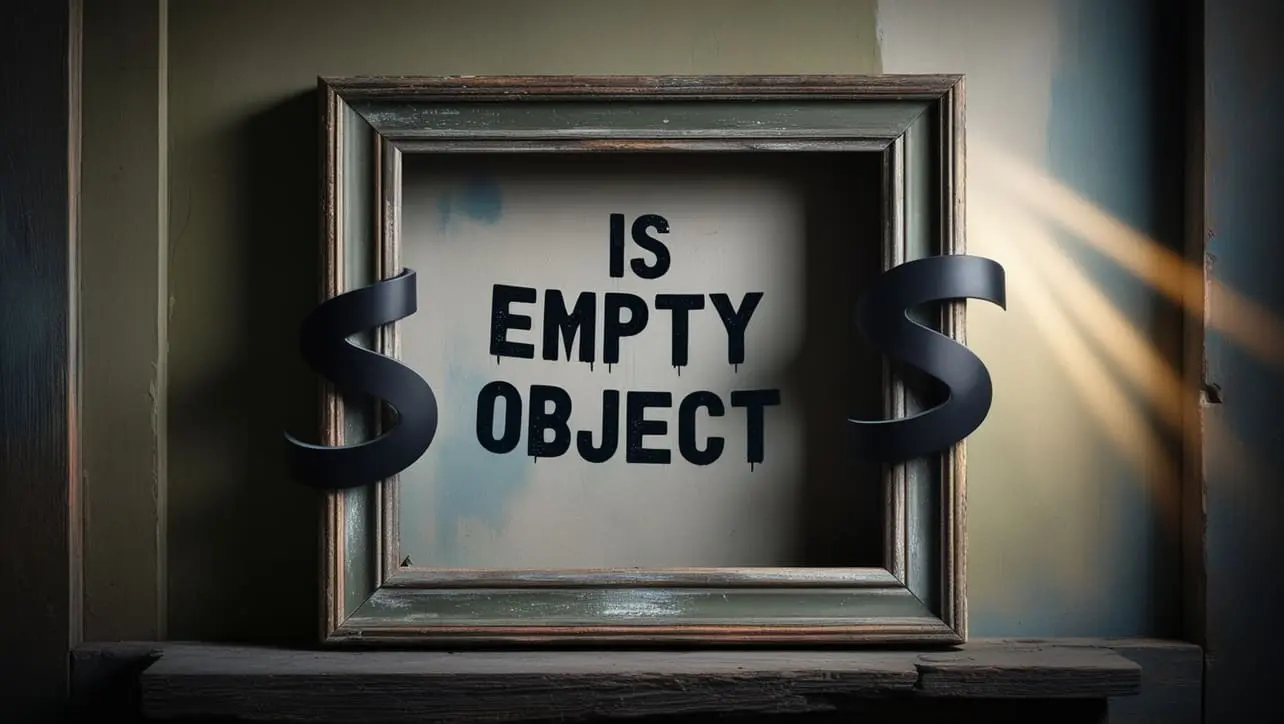
jQuery Topics
- jQuery Introduction
- jQuery Callbacks
- jQuery deferred
- jQuery selectors
- jQuery Ajax Events
- jQuery Ajax Methods
- jQuery Keyboard Events
- jQuery Keyboard Methods
- jQuery Form Events
- jQuery Form Methods
- jQuery Mouse Events
- jQuery Mouse Methods
- jQuery Event Properties
- jQuery Event Methods
- jQuery HTML
- jQuery CSS
- jQuery Fading
- jQuery Traversing
- jQuery Utilities
- jQuery Properties
jQuery jQuery.isEmptyObject() Method

Photo Credit to CodeToFun
🙋 Introduction
In jQuery, the jQuery.isEmptyObject() method is a handy utility for checking if an object is empty. It returns true if the object doesn't contain any properties, otherwise false. This method is particularly useful when you need to validate whether an object has any properties or not.
In this guide, we'll explore the usage of the jQuery.isEmptyObject() method with clear examples to illustrate its functionality.
🧠 Understanding jQuery.isEmptyObject() Method
The jQuery.isEmptyObject() method is designed to check if an object is empty, meaning it doesn't have any properties.
💡 Syntax
The syntax for the jQuery.isEmptyObject() method is straightforward:
jQuery.isEmptyObject( object )Parameters:
- object: The object to be checked for emptiness.
Return Value:
- true: if the object is empty.
- false: if the object contains properties.
📝 Example
Checking an Empty Object:
Suppose you have an empty object and you want to verify if it's truly empty using
jQuery.isEmptyObject():example.jsCopiedvar emptyObject = {}; console.log(jQuery.isEmptyObject(emptyObject)); // Output: trueThis will output
trueindicating that the emptyObject indeed contains no properties.Checking a Non-Empty Object:
Let's now consider a scenario where the object has properties:
example.jsCopiedvar nonEmptyObject = { name: "John", age: 30 }; console.log(jQuery.isEmptyObject(nonEmptyObject)); // Output: falseIn this case, the output will be
falsesince the nonEmptyObject contains properties.Practical Usage in Validation:
You can use
jQuery.isEmptyObject()for validation purposes, such as checking if a form is empty before submission:index.htmlCopied<form id="myForm"> <!-- Form fields go here --> </form> <button id="submitButton">Submit</button>example.jsCopied$("#submitButton").click(function() { var formData = $("#myForm").serializeArray(); if(jQuery.isEmptyObject(formData)) { alert("Form is empty. Please fill in the details."); } else { // Proceed with form submission $("#myForm").submit(); } });In this example, the form submission is prevented if the form is empty, and an alert is displayed instead.
🎉 Conclusion
The jQuery.isEmptyObject() method provides a simple and efficient way to determine whether an object is empty or not. Whether you need to validate form data, check the presence of properties in an object, or perform any other logic based on emptiness, this method proves to be a valuable tool.
By understanding its usage and incorporating it into your jQuery code, you can enhance the reliability and functionality of your web applications.
👨💻 Join our Community:
Author

For over eight years, I worked as a full-stack web developer. Now, I have chosen my profession as a full-time blogger at codetofun.com.
Buy me a coffee to make codetofun.com free for everyone.
Buy me a Coffee












If you have any doubts regarding this article (jQuery jQuery.isEmptyObject() Method), please comment here. I will help you immediately.